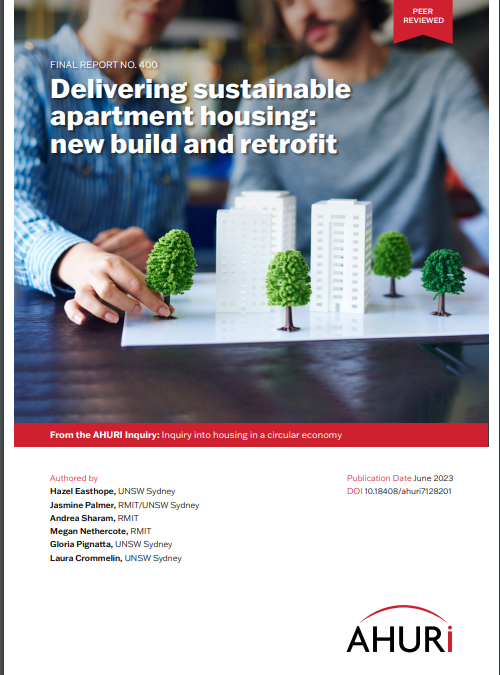This project examines finance, fiscal, regulatory and policy levers that can facilitate a transition towards the mainstream supply of sustainable apartments in Australia, by identifying processes specific to the supply of new apartments and retrofitting existing apartments that impede or promote sustainability (relating to financing, design and construction, and management).
The aim of this project is to identify how a transition towards the mainstream supply of new and retrofitted apartments that are sustainable can be achieved. This aim sits within the overarching research question guiding the inquiry: “how can a transition in housing demand and supply be encouraged to provide housing that is sustainable, affordable, and accessible?” A circular economy approach takes a whole-of-life cycle perspective, which necessitates consideration of the design and construction of new ‘future-proofed’ housing, as well as the upgrading of existing ageing and poor-performing stock. We focus on apartment buildings not only because they house a growing number of Australians (ABS 2017) and are substantial contributors to greenhouse gas emissions, water consumption and waste generation (e.g. City of Sydney 2015); but also because they present challenges to the adoption of sustainable building practices due to unique aspects of their financing, design and construction, and management. These challenges must be understood and addressed to enable a transition towards the mainstream supply of sustainable housing.

